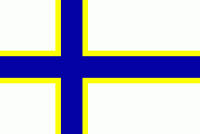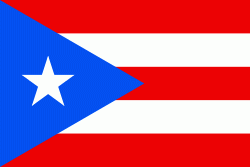Bayamón (Bayamón Municipio)
 |
The Taíno people, the indigenous peoples who encountered European explorers and settlers, were the long-time settlers in this area. The Spanish colonist Juan Ramírez de Arellano established Bayamón as a Spanish settlement on May 22, 1772. Two theories exist about the origin of the name Bayamón. According to one, it was named after the local Taíno chief, Bahamon. The other theory states the name was derived from the Taíno word Bayamongo, which is the native name of the river that runs across this region, implying that Bayamón is the area around this main river, which later on became the center of the city's development.
In 1821, Marcos Xiorro, an African slave, planned to lead a revolt against the sugarcane plantation owners and the Spanish colonial government in Puerto Rico. The slave conspiracy was revealed and suppressed, but Xiorro became a hero among the slaves. He is part of Puerto Rico's folklore. Marco Xiorro was owned by Vicente Andino, a militia captain who owned a sugarcane plantation in Bayamón.
Puerto Rico was ceded by Spain in the aftermath of the Spanish–American War under the terms of the Treaty of Paris of 1898 and became a territory of the United States. In 1899, the United States Department of War conducted a census of Puerto Rico finding that the population of Bayamón was 19,940. The city grew considerably during the start of the 20th century. The area became home to numerous factories specializing in textiles, fertilizer, aluminum between 1901 and 1920. During this time the city also became home to financial institutions such as the Puerto Rico Commercial Bank (Banco Comercial de Puerto Rico), the American Colonial Bank, the First National City Bank of New York, the Chase Manhattan Bank and the Banco Popular de Puerto Rico. This developed and strengthened Bayamón's economy and turned it into both an industrial and commercial hub. The city's infrastructure also developed with the establishment of a bigger sewer system.
The city was also host to some of the events of the VIII Pan American Games in 1979.
Hurricane Maria struck Puerto Rico on September 20, 2017, causing large-scale damage and destruction to infrastructure. Numerous landslides occurred in Bayamón as a result of the hurricane's significant amount of rainfall. In Bayamón, around 300 homes were destroyed, and two people were killed by Hurricane María. Many municipal buildings, and the Goya Foods factory in Bayamón sustained significant damage.
Map - Bayamón (Bayamón Municipio)
Map
Country - Puerto Rico
 |
 |
Currency / Language
| ISO | Currency | Symbol | Significant figures |
|---|---|---|---|
| USD | United States dollar | $ | 2 |
| ISO | Language |
|---|---|
| EN | English language |
| ES | Spanish language |















